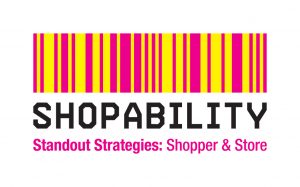
We spent $30.5 billion on retail sales in January, almost 11% above the same time last year and that’s following a bumper December spend.
By ShopAbility Directors Peter Huskins and John Day.
There’s no doubt that there’s plenty of cash around, and people aren’t afraid to spend it. Retailers such as Woolworths, Coles, Metcash/IGA, Harvey Norman, JB Hi-Fi have generally enjoyed explosive profits on the back of this surge in sales and will continue to do so, certainly in the short to medium term.

Whilst growth rates will not stay at these inflated rates, most likely sales will still grow around the 3-5% mark. That growth rate is made up of a balance between people buying more items as we switch between various channels, staying at home/ buying at home a bit more often and spending a little bit more on indulgent products. Plus, price inflation is making a gentle come back with the usual seasonal fruit and vegetable influences, changes in grocery promotional pricing and mix, meat has definitely increased in price post the drought of last year – and a few suppliers are managing to get price increases through as well.
However, the drivers of higher household savings (and spend) may not linger as long as we would like although CBA’s card spending data is already showing growth in retailing continued into early February.
There are potential storm clouds looming across a number of drivers that currently support the retail growth figures that we are all enjoying, and we don’t know what the collective or singular impact may be if these drivers change:
- JobKeeper – enough said about that; however, when it ends, the rattle on effect could be material.
- Bank interest deferrals are also coming to an end, and yes, they are deferrals so whatever wasn’t paid has to be repaid.
- The housing market is galloping ahead, against the prophesy of most industry experts. Higher prices, higher mortgages, higher repayments…is that how it works?
- Lower mortgage and rent payments (as well as rising house prices) are also likely to support sustained spending.
- Increased level of entertaining at home has given grocery a huge boost to the detriment of foodservice; however, that is slowly changing as lock down laws are relaxed.
- The altered shopper behaviour around trust, safety and a huge increase in awareness of provenance and heritage about what people are buying. People are curious and now want to know and will then make their own judgements.
- Channel swap and promiscuity, the role of loyalty has now changed, and price isn’t necessarily the all-consuming driver that it once was. Location and proximity, freshness, service and range amongst other things now influence a shopper’s store selection preference. And I like it when I get there, so the independent supermarkets and small butchers/bakers and candle stick makers are enjoying their well-earned time in the sun.
- Mix of online and e-commerce transactions is escalating at a sensational rate, hold on for the ride or loose the opportunity.
- Future Covid outbreaks and how these are managed and autocratically dictated in each state is a key unknown. Victoria’s reaction to a modest recent outbreak is a case in point, the impact on that for retailers was catastrophic. You can hide behind ‘safety’ for as long as you like. However, the personal and commercial impacts of these unilateral decisions must be considered for the good of individuals, the community and the economy.
No matter what the future holds, retail stores and the ability to buy stuff from them in any and many ways will remain important for shoppers. A multichannel method works best as part of a strategic approach to your total retail offer, and that will come into its own again when stores are able to stay open without any further conditions after Covid pandemic is properly controlled through vaccination and consistent testing. Whilst more shoppers are now buying online, it’s clear from the like-for-like sales growth in today’s retail figures there’s an appetite to buy in bricks and mortar shops that is likely to continue once things calm down.
And if your results were buoyant and fruitful over the last 12 months like some of the larger players, now could be a great time to invest to make your business even more shock proof and fit to trade. A cautious approach to managing stock levels, handling cash flow in a responsible way, exploring new as well as the usual sales generation options, and containing your biggest cost in wages will create a solid base to sustain most businesses until the future is clearer for us all.
The rest is just opinions.
 About Peter Huskins
About Peter Huskins
Peter Huskins is a career retailer who is widely known and respected in the Australian FMCG industry. With extensive experience in department stores, DDS, liquor, and supermarkets, he has been working with suppliers and retailers developing business, category, customer and channel strategy and competitive points of difference for more than 10 years. For more information, call Peter on 0412 574 793 or email peter@shop-ability.com.au.
About John Day
With a reputation for strategic thinking and a realistic approach, John has had more than 40 years of general management and SLT experience in the FMCG industry in Australia and overseas, and with blue chip companies such as National Foods, Simplot and the Mars group. Call John on 0412 992121 or email john@shop-ability.com.au.




